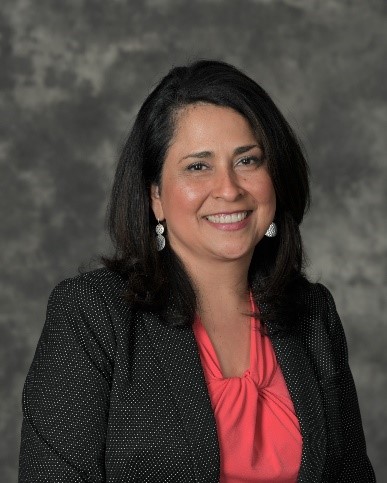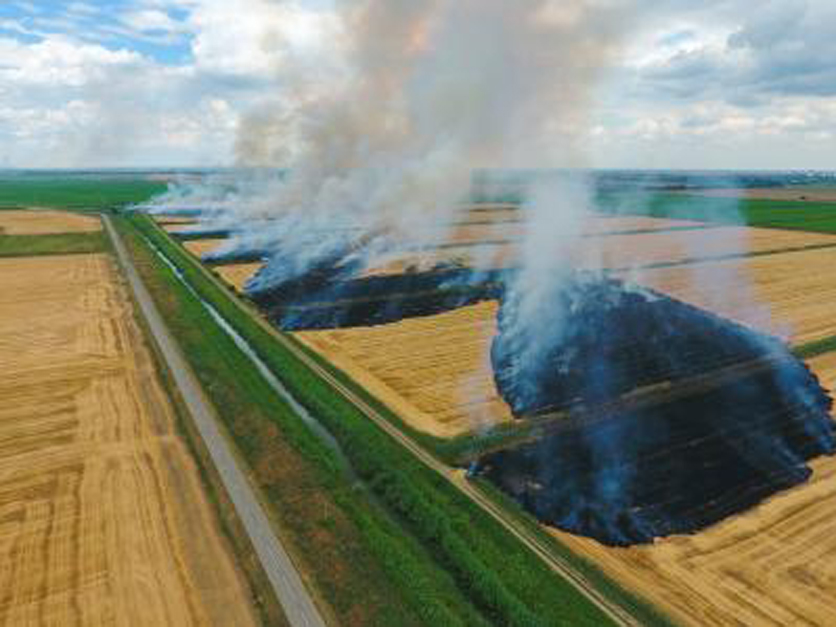New limits for ratcheting down the burning of agricultural waste in the San Joaquin Valley went into effect on January 1, two weeks after the governing board for the local air pollution control district unanimously approved the measures.
The contentious debate between environmentalists and the agriculture industry focused on the progress made in the two decades since the district first began phasing in new prohibitions on burning. Frustrations escalated as well over the amount of attention focused on ag burning when wildfires consumed more than four million acres in 2020.
“Understand the industry before you start mouthing off saying that our industry isn’t doing a damn thing about trying to get rid of burns,” said Manuel Cunha, president of the Nisei Farmers League. “We're doing a heck of a lot.”
Cunha took issue with comments from several of the environmental and social justice advocates also testifying at the December board meeting, but specifically aimed his criticism at Mark Rose, a program manager for the National Parks Conservation Association, an environmental group pushing for a complete ban on all burning.
“Staff are going to proceed with doing whatever it takes to avoid compliance with state law while ensuring the profitability of industry and special interests at the expense of our health and well-being,” said Rose. He added that all incentive funding for helping farmers transition to alternative practices “should be reserved for small-scale or economically disadvantaged farmers.”
Cunha, who has been closely engaged in air quality issues in the valley for more than 30 years, countered that the staff were taking “a very good direction” in the process. He noted that the biggest challenge for the industry in reducing burning has been with grape harvesting.
In a new analysis, district staff found no feasible alternatives to burning vineyard removals, and recommended vineyards be evaluated on a case-by-case basis beginning in 2022. Vines tend to wrap around trellis wires as they grow, and any hidden wires could destroy expensive equipment for wood chipping—an alternative to ag burning that works more readily for orchard removals. Cunha added that the environmental community “shouldn't be telling us that we should be able to incorporate the wires into the ground.”

Almond Alliance President Elaine Trevino
The board also approved an exemption until 2024 for the burning of raisin trays. The report noted that this type of waste burning has declined by 90% since 1993, dropping from 270,000 acres to just 21,000 in 2020.
“We are doing our best to try to reduce ag burning in all shapes and forms,” said Cunha. “And we're going to work with the staff to continue on this effort.”
Due to several months of lingering wildfire smoke in the valley—mostly from the Creek Fire—as well as existing prohibitions, the amount of ag burning in 2020 was “virtually zero,” according to Samir Sheikh, the district’s executive director. Cunha emphasized this fact in responding to Rose.
“Before you start pointing the finger at agriculture, you better point a finger at your own entire backyard called the Sierra Nevada,” said Cunha.
Board Supervisor Kuyler Crocker seized on this argument as well, saying that the 40,000 acres burned in an average year for the industry pales in comparison to the millions of acres burned by wildfires.
“This is small potatoes as far as I'm concerned,” said Crocker. “We need more logging. If you want to really reduce the black carbon, that's what we need to promote. We need to clean up our forests.”
Supervisor Tom Wheeler blamed environmentalists for poor forest management.
“They shut down 100 of our 120 sawmills in California and stopped almost all logging,” he said. “Now you're all paying for it.”
Roger Isom, president of the Western Agricultural Processors Association and the Agricultural Energy Consumers Association, noted the staff report’s finding that the closure of biomass plants has been the greatest impediment to reducing the amount of burning.
“When we started down this path [17 years earlier], there were a lot more biomass plants, and most people moved their material to that and thought that was the answer,” he said. “Once those plants started shutting down, it forced us into this situation.”
Isom said the answer is not in the type of biomass processing that remains in the valley. He highlighted new technologies like biochar, cellulosic ethanol, renewable diesel and other biogas projects. He urged the board to take a more active role in reducing a number of policy roadblocks making it too costly to build such alternative energy plants.
Isom also recommended the district offer more incentives to help farmers and processors chip material and incorporate it back into the soil. However, a more affordable approach known as an air curtain burner, which staff have encouraged as an alternative, has too many regulatory limitations to work, said Isom.
Interested in more coverage and insights? Receive a free month of Agri-Pulse West.
Almond Alliance President Elaine Trevino pushed for more incentives for almond growers as well.
“It is our understanding there are no resources or incentives available specifically for pruning,” she said. “This is a very significant annual cost, particularly for small growers.”
Trevino pushed back on the staff recommendation of reducing the amount of almond acres allowed to burn each year to 50 acres for each farmer. She asked for 100 acres, which would include 70% of the orchards, and argued that larger farmers have a greater capacity to spread the costs across more acres.
Jesse Roseman, a principal analyst at the Almond Board of California, said that while an orchard typically lasts 25 years until it is removed, the costs can be prohibitive for bringing in the heavy equipment for a small acreage, and the few chipping companies available are difficult to schedule on a timely basis.
Supervisor Alexander Sherriffs said the cost of removal should be a part of the farmer’s business plan when investing in a new orchard or vineyard.
The Almond Alliance, said Trevino, has been working for Central Valley Rep. Josh Harder on a bill to encourage pilot projects for pyrolysis, an often expensive and complicated process for converting feedstocks into fuel to power facilities.
Staff and board members recognized the air district has had little support from the state in pursuing such biomass solutions.
“The reality is the state doesn't want to subsidize biomass anymore,” said Crocker. “It's not as cost effective as other forms of electricity.”
Sheikh said the facilities have “really just fallen out of favor when it comes to contract renewal under the Public Utilities Commission.” The report offered a series of recommendations to spur new bioenergy technologies, including the creation of a clean biomass energy collaborative to bring agencies together to address the barriers to moving projects forward.
“The realities of the costs and the energy policies and all that just don't create enough of an environment today for these to actually be happening in the way that we need them,” said Sheikh.


